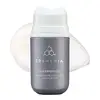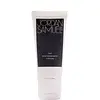What's inside
What's inside
 Key Ingredients
Key Ingredients

 Benefits
Benefits

 Concerns
Concerns

 Ingredients Side-by-side
Ingredients Side-by-side

Water
Skin ConditioningCaprylic/Capric Triglyceride
MaskingGlycerin
HumectantPentylene Glycol
Skin ConditioningGlyceryl Stearate
EmollientLactobacillus Ferment Lysate Filtrate
Skin ConditioningHydrogenated Ethylhexyl Olivate
EmollientSqualane
EmollientMangifera Indica Seed Butter
Skin ConditioningVitis Vinifera Fruit Extract
Skin ConditioningZingiber Officinale Root Extract
MaskingBoswellia Serrata Extract
Skin ConditioningChlorella Vulgaris Extract
Skin ConditioningRhodiola Rosea Root Extract
EmollientInonotus Obliquus Extract
Skin ConditioningGanoderma Lucidum Extract
Skin ProtectingWithania Somnifera Root Extract
Skin ConditioningLeuconostoc/Radish Root Ferment Filtrate
AntimicrobialPopulus Tremuloides Bark Extract
AntiseborrhoeicTremella Fuciformis Sporocarp Extract
AntioxidantPanthenol
Skin ConditioningBisabolol
MaskingCetearyl Alcohol
EmollientXanthan Gum
EmulsifyingHydroxyacetophenone
AntioxidantAmmonium Acryloyldimethyltaurate/Vp Copolymer
Sodium Stearoyl Lactylate
Emulsifying1,2-Hexanediol
Skin ConditioningCaprylyl Glycol
EmollientSodium Hydroxide
BufferingHydrogenated Olive Oil Unsaponifiables
EmollientPropanediol
SolventLavandula Angustifolia Flower/Leaf/Stem Extract
MaskingSodium Phytate
Citric Acid
BufferingLactic Acid
BufferingSodium Benzoate
MaskingWater, Caprylic/Capric Triglyceride, Glycerin, Pentylene Glycol, Glyceryl Stearate, Lactobacillus Ferment Lysate Filtrate, Hydrogenated Ethylhexyl Olivate, Squalane, Mangifera Indica Seed Butter, Vitis Vinifera Fruit Extract, Zingiber Officinale Root Extract, Boswellia Serrata Extract, Chlorella Vulgaris Extract, Rhodiola Rosea Root Extract, Inonotus Obliquus Extract, Ganoderma Lucidum Extract, Withania Somnifera Root Extract, Leuconostoc/Radish Root Ferment Filtrate, Populus Tremuloides Bark Extract, Tremella Fuciformis Sporocarp Extract, Panthenol, Bisabolol, Cetearyl Alcohol, Xanthan Gum, Hydroxyacetophenone, Ammonium Acryloyldimethyltaurate/Vp Copolymer, Sodium Stearoyl Lactylate, 1,2-Hexanediol, Caprylyl Glycol, Sodium Hydroxide, Hydrogenated Olive Oil Unsaponifiables, Propanediol, Lavandula Angustifolia Flower/Leaf/Stem Extract, Sodium Phytate, Citric Acid, Lactic Acid, Sodium Benzoate
Water
Skin ConditioningGlyceryl Stearate
EmollientSqualane
EmollientGlycerin
HumectantJojoba Esters
EmollientPropanediol
SolventCetearyl Alcohol
EmollientHelianthus Annuus Seed Wax
Skin ConditioningCamellia Sinensis Leaf Water
MaskingAcetyl Octapeptide-3
HumectantAcetyl Hexapeptide-8
HumectantAcetyl Hexapeptide-51 Amide
Skin ConditioningSodium Stearoyl Lactylate
Emulsifying1,2-Hexanediol
Skin ConditioningSodium Hyaluronate
HumectantTetrasodium Glutamate Diacetate
Xanthan Gum
EmulsifyingChamomilla Recutita Flower Extract
MaskingButylene Glycol
HumectantOlea Europaea Leaf Extract
PerfumingCaprylhydroxamic Acid
Acacia Decurrens Flower Wax
EmollientPolyglycerin-3
HumectantCitric Acid
BufferingCaprylyl Glycol
EmollientEthylhexylglycerin
Skin ConditioningWater, Glyceryl Stearate, Squalane, Glycerin, Jojoba Esters, Propanediol, Cetearyl Alcohol, Helianthus Annuus Seed Wax, Camellia Sinensis Leaf Water, Acetyl Octapeptide-3, Acetyl Hexapeptide-8, Acetyl Hexapeptide-51 Amide, Sodium Stearoyl Lactylate, 1,2-Hexanediol, Sodium Hyaluronate, Tetrasodium Glutamate Diacetate, Xanthan Gum, Chamomilla Recutita Flower Extract, Butylene Glycol, Olea Europaea Leaf Extract, Caprylhydroxamic Acid, Acacia Decurrens Flower Wax, Polyglycerin-3, Citric Acid, Caprylyl Glycol, Ethylhexylglycerin
Ingredients Explained
These ingredients are found in both products.
Ingredients higher up in an ingredient list are typically present in a larger amount.
1,2-Hexanediol is a synthetic liquid and another multi-functional powerhouse.
It is a:
- Humectant, drawing moisture into the skin
- Emollient, helping to soften skin
- Solvent, dispersing and stabilizing formulas
- Preservative booster, enhancing the antimicrobial activity of other preservatives
Caprylyl Glycol is a humectant and emollient, meaning it attracts and preserves moisture.
It is a common ingredient in many products, especially those designed to hydrate skin. The primary benefits are retaining moisture, skin softening, and promoting a healthy skin barrier.
Though Caprylyl Glycol is an alcohol derived from fatty acids, it is not the kind that can dry out skin.
This ingredient is also used as a preservative to extend the life of products. It has slight antimicrobial properties.
Learn more about Caprylyl GlycolCetearyl alcohol is a mixture of two fatty alcohols: cetyl alcohol and stearyl alcohol. It is mainly used as an emulsifier. Emulsifiers help prevent the separation of oils and products. Due to its composition, it can also be used to thicken a product or help create foam.
Cetearyl alcohol is an emollient. Emollients help soothe and hydrate the skin by trapping moisture.
Studies show Cetearyl alcohol is non-toxic and non-irritating. The FDA allows products labeled "alcohol-free" to have fatty alcohols.
This ingredient is usually derived from plant oils such as palm, vegetable, or coconut oils. There is debate on whether this ingredient will cause acne.
Due to the fatty acid base, this ingredient may not be Malassezia folliculitis safe.
Learn more about Cetearyl AlcoholCitric Acid is an alpha hydroxy acid (AHA) naturally found in citrus fruits like oranges, lemons, and limes.
Like other AHAs, citric acid can exfoliate skin by breaking down the bonds that hold dead skin cells together. This helps reveal smoother and brighter skin underneath.
However, this exfoliating effect only happens at high concentrations (20%) which can be hard to find in cosmetic products.
Due to this, citric acid is usually included in small amounts as a pH adjuster. This helps keep products slightly more acidic and compatible with skin's natural pH.
In skincare formulas, citric acid can:
While it can provide some skin benefits, research shows lactic acid and glycolic acid are generally more effective and less irritating exfoliants.
Most citric acid used in skincare today is made by fermenting sugars (usually from molasses). This synthetic version is identical to the natural citrus form but easier to stabilize and use in formulations.
Read more about some other popular AHA's here:
Learn more about Citric AcidGlycerin is already naturally found in your skin. It helps moisturize and protect your skin.
A study from 2016 found glycerin to be more effective as a humectant than AHAs and hyaluronic acid.
As a humectant, it helps the skin stay hydrated by pulling moisture to your skin. The low molecular weight of glycerin allows it to pull moisture into the deeper layers of your skin.
Hydrated skin improves your skin barrier; Your skin barrier helps protect against irritants and bacteria.
Glycerin has also been found to have antimicrobial and antiviral properties. Due to these properties, glycerin is often used in wound and burn treatments.
In cosmetics, glycerin is usually derived from plants such as soybean or palm. However, it can also be sourced from animals, such as tallow or animal fat.
This ingredient is organic, colorless, odorless, and non-toxic.
Glycerin is the name for this ingredient in American English. British English uses Glycerol/Glycerine.
Learn more about GlycerinGlyceryl Stearate is a mix of glycerin and stearic acid.
It is used to stabilize the mixing of water and oil ingredients. By preventing these ingredients from separating, it can help elongate shelf life. It can also help thicken the product's texture.
As an emollient, it helps soften skin and supports barrier-replenishing ingredients.
In cosmetics, Glyceryl Stearate is often made from vegetable oils or synthetically produced.
This ingredient may not be fungal-acne safe
Fun fact: The human body also creates Glyceryl Stearate naturally.
Learn more about Glyceryl StearatePropanediol is an all-star ingredient. It softens, hydrates, and smooths the skin.
It’s often used to:
Propanediol is not likely to cause sensitivity and considered safe to use. It is derived from corn or petroleum with a clear color and no scent.
Learn more about PropanediolThis ingredient also goes by the name SSL. It is a non-toxic, biodegradable ingredient made from renewable sources.
SSL is typically used as a surfactant and emulsifier in skincare to stabilize water-based formulas and improve texture. It can be synthetic or animal-derived.
Squalane is an emollient that helps the skin hold onto moisture. It's an oily liquid that occurs naturally in certain types of fish and plant oils.
Because squalane boosts hydration in the skin, it also comes with plenty of benefits: it is an antioxidant and can help fight free radicals and skin damage. Squalane is also found to have a detoxifying effect when applied.
Squalane comes from squalene, which occurs naturally within the sebum of our skin. It is one of the oils our skin produces to keep itself hydrated. Squalane is the hydrogenated version of squalene and has a longer shelf life.
Research shows that squalane is non-irritating (even at 100% concentration).
In general, it's a fantastic ingredient. It does a great job at hydrating the skin, and it's suitable for those with sensitive skin.
The source of squalane may impact malassezia / fungal acne. This is because olive oil derived squalane can contain impurities such as fatty acids and plant waxes. Sugarcane derived squalane is recommended for anyone with malassezia concerns.
Is squalane vegan?
This depends on the source. Squalane can be derived from both plants and animals. Most squalane used in skincare comes from plants.
Please note: the source of squalane is only known if disclosed by the brand. We recommend reaching out to the brand if you have any questions about their squalane.
Read more about squalene with an "e".
Is squalane an oil?
Squalane is often called an oil, but it’s technically not; it’s a hydrocarbon, meaning it’s only made of carbon and hydrogen, unlike true oils which are triglycerides made of fatty acids and glycerol.
The term “oil-free” isn’t regulated, so companies can define it however they want. Some exclude all oils, while others just avoid mineral oil or comedogenic oils.
While some people avoid oils thinking they cause breakouts, the right kind of oil (or oil-like ingredient like squalane) can actually help balance and hydrate your skin. It’s worth testing out simple oils or squalane to see what works best for your skin.
Learn more about SqualaneWater. It's the most common cosmetic ingredient of all. You'll usually see it at the top of ingredient lists, meaning that it makes up the largest part of the product.
So why is it so popular? Water most often acts as a solvent - this means that it helps dissolve other ingredients into the formulation.
You'll also recognize water as that liquid we all need to stay alive. If you see this, drink a glass of water. Stay hydrated!
Learn more about WaterXanthan gum is used as a stabilizer and thickener within cosmetic products. It helps give products a sticky, thick feeling - preventing them from being too runny.
On the technical side of things, xanthan gum is a polysaccharide - a combination consisting of multiple sugar molecules bonded together.
Xanthan gum is a pretty common and great ingredient. It is a natural, non-toxic, non-irritating ingredient that is also commonly used in food products.
Learn more about Xanthan Gum